
Who Killed William Robinson? Race, Justice and Settling the Land: A Historical Whodunit. Web site by Ruth Sandwell and John Lutz. http://web.uvic.ca/history-robinson.
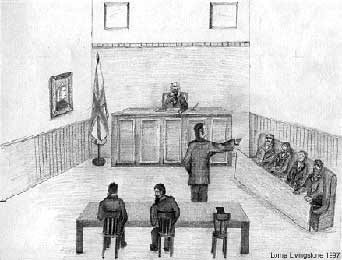 |
The trial of Tshuanhusset for Robinson's murder. Drawing by
Lorna Livingston. From Who Killed William Robinson? |
|
For a generation raised on Law and Order, this Web site provides engaging exercises in historical methods. It is, as advertised, an historical whodunit, but the range of primary and secondary sources placed together allows for studies of frontier society in the mid-nineteenth century or the interactions of race and imperialism. Originally mounted in 1997-8, the Web site was completely remodeled in 2000 to enhance its appearance and navigation. The number of photographs and drawings was expanded, but the written historical materials remain essentially the same. Who Killed William Robinson? clearly demonstrates the tremendous advantages, and some of the
drawbacks, inherent in today's Internet technology when it is employed for instructional purposes.
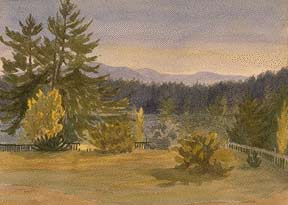 |
Salt Spring Island, British Columbia. Reproduction of
1888 painting by Josephine Crease [?]
From Who Killed William Robinson? |
|
William Robinson was a middle-aged African American from New Jersey who moved to Salt
Spring Island (near Vancouver Island in the Pacific northwest) to take up land and farm. He had
left his wife and four children in the United States and was about to rejoin them when he was
murdered in 1868. There were three killings of African Americans on the island in that year and
the one preceding, but only in this instance was a prosecution brought successfully. A Penelekut
Indian named Tshuanhusset was convicted and hanged in 1869.
The colony of British Columbia was still in its infancy. Vancouver and adjacent islands were only politically joined with the mainland in 1866, and the colony did not become a province of Canada until 1871. The general area had long been home to a number of aboriginal peoples, but
the invasion from without brought land-hungry settlers from a variety of backgrounds. Salt Spring
Island proved alluring to British, American, Kanakas (Hawaiians), Azorian Portuguese, and
people of other nationalities. The island was a polyglot frontier society where British legal
institutions and British gunboat diplomacy attempted to establish a semblance of order. Its
mixture of races and nationalities presents a complex human maze, one which students are forced to explore while trying to determine if Tshuanhusset was indeed the murderer of William Robinson.
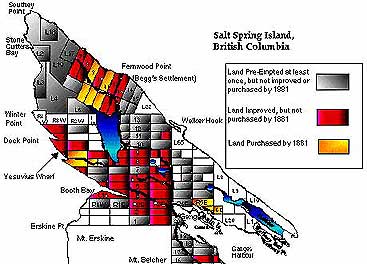 | |
Selection from land map in Who Killed William Robinson? |
|
Historians Ruth Sandwell and John Lutzvast have assembled a vast array of primary sources and some secondary interpretations on Salt Spring Island and the three murders. For the newspaper
accounts, letters, diaries, oral history, official correspondence, court proceedings, and
contemporary published works, a new aspect of the remodeled site is informative displays that
can be obtained by clicking on About This Source. Consequently, as students go about doing their
particular assignments, they have mini-primers evaluating the usefulness of various sorts of
contemporary evidence. There are nearly a hundred historical photographs and drawings that give
faces to many of the people involved and that help to establish the material setting and landscape.
These illustrative materials are inventoried in two separate sections with title, attribution,
provenance, and date. This impressive and essential feature is found too infrequently in other Web
sites designed to promote genuine historical understanding. Additionally, maps and graphs plot
population components and settlement patterns by race and nationality.
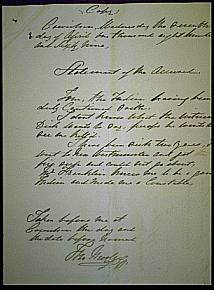 |
Statement by the accused.
From Who Killed William Robinson? |
|
Who Killed William Robinson? is organized into four main sections: The Murder, Historical
Contexts, The Archives, and Interpretations. Most students will undoubtedly be interested in why
William Robinson was killed and by whom, but they will quickly find that the evidence is so
tainted and the judicial proceedings so irregular that the case cannot be solved conclusively. The
romp is still worth the effort, though, not only for encountering many different types of primary
sources, but also for seeing the interactions between race and imperialism. Were the British just
out to hang another Indian, as one contemporary newspaper correspondent argued, or were
relations between Blacks and Indians especially tortuous? How did the various sorts of Whites fit
into the picture? The oral history provided by an early African-Canadian family suggests that it
was indeed an Indian who killed William Robinson, but British justice hanged the wrong man.
Historian Crawford Killan, who wrote about Black pioneers in British Columbia, believed that
there was a deeper explanation. After a smallpox epidemic ravaged aboriginal populations in
1862, the deaths of sober elders provided an opening for young hotheads to prevail.
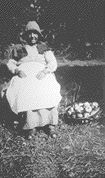 |
Sylvia Stark. From
Who Killed William
Robinson? |
|
The section on historical contexts provides a variety of sources on settler society, whippings and
hangings, judicial murder, and other murders. Here, too many of the letters and diaries are
tangential to the Web sites's primary aim. They might interest someone inquiring into settlement
processes or the local history of Salt Spring Island, but generally they are a deterrent to students
likely to wander aimlessly within a sea of information of little relevance. The surfeit of information
that can be conveyed in Internet format is one of the essential drawbacks to this Web site. The Archives section, for instance, regroups the primary sources from the earlier sections according to
provenance. The recollections provided by Sylvia Stark about her family are essential, but at
thirty-three pages they are just too long and should have been edited. The Web site creators seem to
have sensed this difficulty and have provided a cast of characters section where short biographies
of the principal historical figures are provided.
The large volume of materials accounts for more than the usual number of transcription errors.
One newspaper account has William Robinson eating his foot rather than his food. The entry on
Tshuanhusset reads: "by the Nanaimo magistrate Nanaimo, Mr. Franklyn." The date of one of
John Lutz's published articles is wrong, even though the volume and issue numbers are correct.
These are but three examples.
Despite these shortcomings, Who Killed William Robinson? is a sophisticated Web site with
which to introduce students to the way historians work. It represents a vast improvement over
what publishers previuosly produced in this genre. The combination of race, imperialism, settlement,
and murder are greatly attractive to undergraduates. To date, there have been some 37,000 hits at
this site. Second-year Canadian undergraduates responded very well when I first used the Web site
as the focus for their principal assignment in a course on historical methods. They seemed to be
genuinely pleased with the ways in which their encounter with this very little corner of history
enhanced their intellectual growth. Depending on levels of academic maturity, English-speaking
students generally should find the Web site interesting due the number of variables at play. It
presents formidable intellectual challenges that stimulate the mind. Without challenge, there is no
achievement.
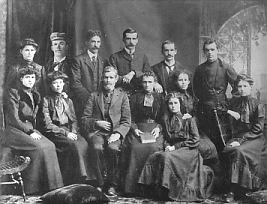 |
Bittancourt family portrait. The Bittancourt family
acquired William Robinson's land. From
Who Killed William Robinson? |
|
A password that protects the interpretations section from student access can be obtained by e-mailing the authors. This is a rather silly introduction in the year 2000 remodeling of the site. If we are
asking students to act like us, shouldn't they have all the tools available that we use? An
improved teacher's manual in electronic format has also been made available recently for those
contacting the authors. Due to the Web site's complexity, students cannot be thrown into it without considerable in-class preparation that includes discussion about the nature of primary and secondary sources, how to assess evidence, why some sources are better than others, and then how these ideas govern navigation of the Web site.Historians are indebted to Ruth Sandwell and John Lutz for using new
technology for the transmission of intellectual skills that are now centuries old.
Terry Crowley
University of Guelph
~ End ~
Web Site Review of Who Killed William Robinson?
Race, Justice and Settling the Land: A Historical Whodunit.
Copyright © 2000, 2001 by The Journal for MultiMedia
History
Comments
| JMMH
Contents
|





